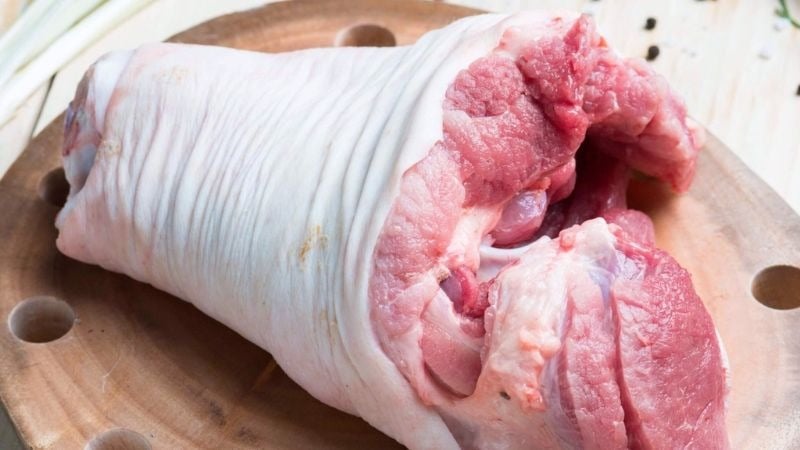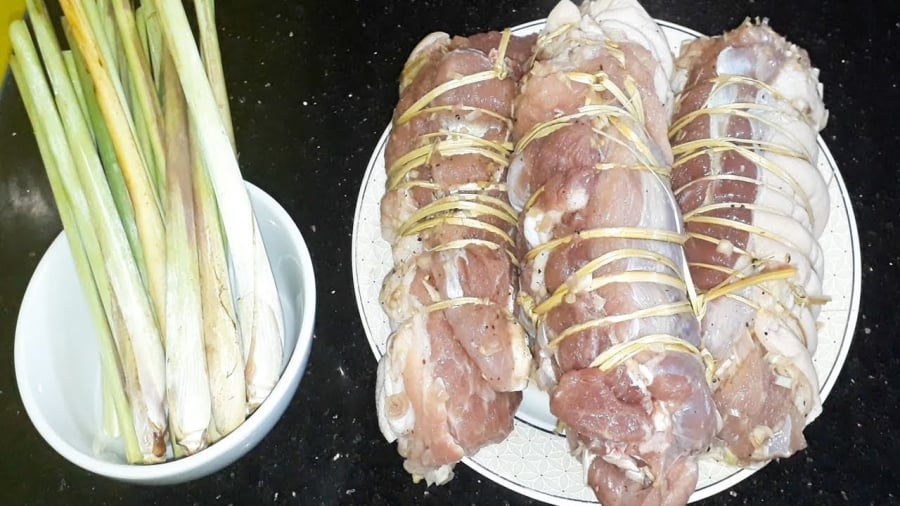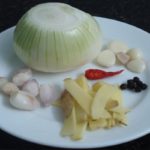Tips for Choosing Fresh and Delicious Pork
Color and Scent
One of the common ways to select clean pork is to observe the color and scent of the meat. High-quality pork usually ranges in color from light pink to dark red and has no putrid smell.

One of the standard methods to pick fresh pork is to examine its color and aroma.
Fresh pork is usually springy and has good elasticity. When purchasing, you can gently press the meat to test its elasticity. Fresh meat will create a slight indentation but will bounce back without leaving a mark. If the meat appears firm, compact, and free of leakage or slime, it is delicious pork.
Fat and Meat Layers
Typically, tasty pork will have a fat layer about 0.6 to 0.8 inches thick, firmly attached to the lean meat. According to some, thicker fat and skin indicate a pig raised naturally, not for rapid weight gain.
Method for Cooking Delicious and Odor-Free Boiled Pork
Boiled pork is a simple dish but a common feature in family meals, often served with a harmonious combination of salted lemon, chili fish sauce, anchovy sauce, or fermented anchovy paste, and used in dishes such as pork wrapped in rice paper or salads/pickles combined with vegetables.

Before boiling, rinse the meat with diluted salt water to disinfect and reduce the fishy odor. Choose a cut with both lean and fat meat to ensure a tastier boiled dish.
However, when boiling pork, many people encounter issues like uneven cooking, foul odor, and lack of flavor. To address these problems, consider the following tips:
Before boiling, wash the meat with diluted salt water to disinfect and reduce any fishy odor. Choosing a cut with a mix of lean and fatty meat will result in a more delicious boiled dish.
Pork hocks and belly pork often have a more appealing flavor when boiled than tenderloin or rump. You can also add ingredients like vinegar or lemon, a small amount of fresh ginger, an onion, or use meat-tying strings to enhance the flavor of the boiled meat.
Use soft tying strings to bind the meat before boiling to give it a nice shape and make it easier to slice afterward. Tying the meat along its length will help you create a round piece, and after boiling, it can be easily sliced crosswise.
Why You Should Boil the Meat Twice
To ensure that your boiled pork is tasty and odor-free, it is recommended to boil the meat twice. During the first boil, place the meat in a pot, add enough water, and bring it to a boil for 2-3 minutes. Then, add a few drops of eating vinegar or lemon juice to eliminate any unpleasant odors and make the meat brighter. After discarding the first batch of boiling water, rinse the meat with warm water and prepare for the second boil.
For the second boil, have a pot of boiling water ready and place the meat inside along with a few grains of salt, a small piece of ginger, and a peeled onion. Simmer the pot over low heat and continue boiling the meat until it is thoroughly cooked. When done, the meat will be a bright white color, and its distinctive aroma will be ready for you to savor.
How to Remove the Meat’s Odor
Salt helps distribute the flavor evenly, ginger eliminates odors, and onion adds a delightful aroma to the boiled pork. It is essential to simmer the water over medium heat until the meat is cooked. Check the meat by poking it with chopsticks. If pink liquid still comes out, continue cooking for about 5 more minutes. If the meat is cooked, the chopsticks will go through effortlessly without any pink liquid escaping.

Salt helps distribute flavor evenly, ginger removes odors, and onion enhances the boiled pork’s taste.
After the meat is cooked, remove it from the pot and soak it in a bowl of cold water with a few ice cubes. The cold water helps the meat contract and maintain its shape while preventing dryness and discoloration. Once the meat has cooled completely, you can slice it for immediate use.
For more even and attractive slices, you can chill the meat in the refrigerator for a few hours before packaging. Use plastic wrap to tightly wrap the meat and chill it for a few hours to make it firmer and easier to cut.
More Useful Advice for Homemakers (Part 2)
Have you heard of the surprisingly easy tips to make cooking and household chores simpler? White radish eliminates the acrid taste of salted meat, adding alum to raw shrimp helps soften it, and adding cold water when frying eggs can make them crispy – these are just a few of the tricks to make your life easier.
Ten Strategies to Streamline Your Cooking Process
Are you a busy housewife looking for ways to save time in the kitchen? Did you know that flossing can also help you out? Check out these 10 tips to help you quickly and easily prepare delicious meals for your family. Learn how to peel garlic in 10 seconds and cut cherry tomatoes quickly for a healthy and tasty meal.



































